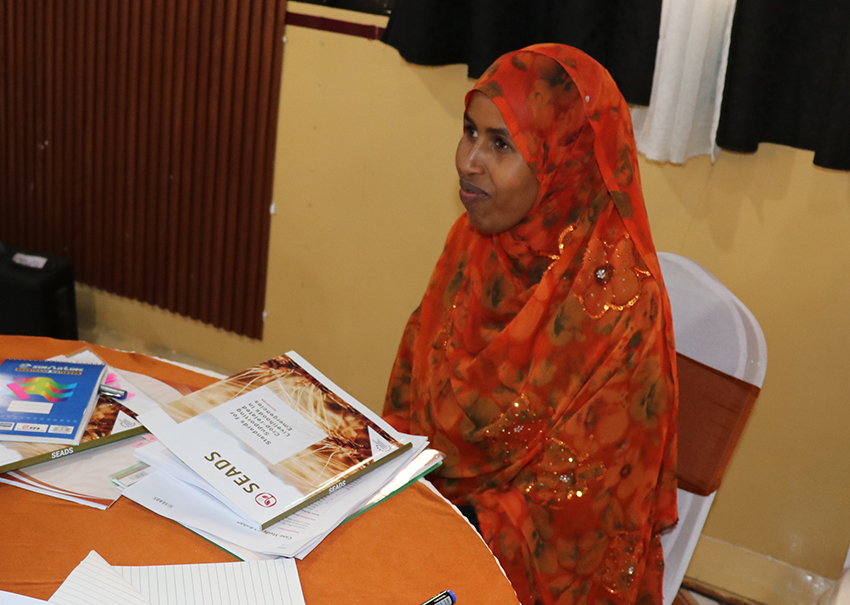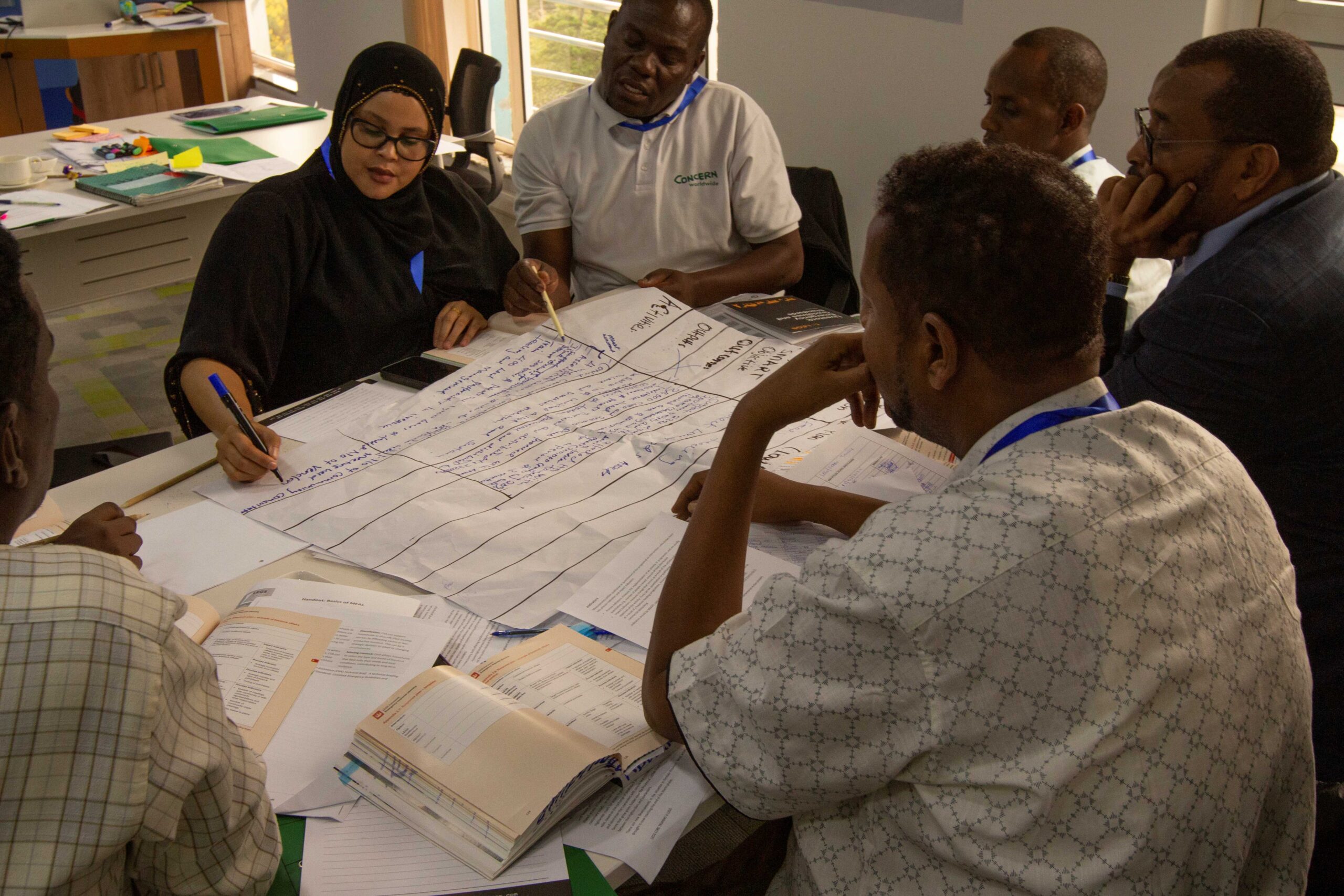By Neil Marsland
In May 2021, FAO published a study on the impact that COVID-19 measures are having on agricultural livelihoods in eleven of the world’s poorest and most fragile countries: Afghanistan, Central African Republic, Colombia, Democratic Republic of the Congo, Liberia, Mali, Niger, Sierra Leone, Somalia, Yemen, and Zimbabwe. The study findings have direct relevance to SEADS (Standards for Supporting Agricultural Livelihoods in Emergencies) because of the growing evidence that in many countries, the effects of COVID-19 restrictions are equivalent to the effects of humanitarian crises. In total, over 25,000 households were interviewed for the study.
Key Questions for the Study
This study examined three questions:
- How important (in terms of disruptions to income and household food security) has the impact of COVID-19 restrictions been compared to other shocks including, drought, flooding, and conflict?
- Did the COVID-19 restrictions have different impacts according to type of agricultural livelihood? For example, were households that rely mainly on crop cultivation impacted differently than households that rely mainly on livestock production?
- Irrespective of type of agricultural livelihood, was the impact of the COVID-19 restrictions more severe for production or for sales and marketing?
Results
Question 1: The impact of COVID-19 restrictions on incomes and food security outcomes were comparable to that of major shocks, such as conflict or natural disasters. COVID-19 restrictions had a triple effect on agricultural livelihoods: increasing prices for consumption, increasing access constraints for production inputs, and reducing incomes from sales. This significant finding shows that humanitarian actors should view the human and economic impacts of COVID-19 through the same lens that that they would view a drought or a conflict and recognize that the restrictions caused many households to need emergency livelihood support. Further, across all livelihood types and regardless of income sources, female headed households were more likely to report income losses or being food insecure.
Question 2: The study found that certain types of agricultural livelihood groups were particularly affected by COVID-19 restrictions: namely livestock producers, perishable cash crop producers, and petty traders. Livestock producers were the most likely among all types of agricultural producers to report difficulties in accessing inputs or selling their products. They were also heavily affected by movement restrictions that limited their access to pastures. Small scale vegetable and fish traders, mostly women, were also highly affected by COVID-19 restrictions.
The difference between these two groups relates to their abilities to buffer the shock. Livestock producers were, to some extent, able to cushion the impact of COVID-19 restrictions by selling assets. While this coping strategy is effective in the short-term, it can have serious longer term consequences on food security and income. Perishable vegetable and fish producers and sellers, on the other hand, had no buffer: their inability to access markets meant a compete loss of saleable produce and thus an immediate income shock. The only slight compensation for the cash crop producers was that they were able to consume their own production, slightly reducing the shock to food security.
Question 3: The study showed that the COVID-19 restrictions affected production and sales differently for different types of producers. Overall, across the whole data set there was a larger impact on marketing than production and access to inputs. Within this overall finding, however, there were variations depending on livelihood type, with certain types of livelihood more likely to cite production or inputs constraints than others. A good example of this is livestock producers who need to access inputs (mainly feed) frequently. For them, input constraints were indeed a major concern. At the other end of the spectrum are the perishable cash crop sellers who were particularly badly affected by marketing restrictions as they were unable to store agricultural products when markets could not be accessed.
Conclusions
The report confirms that COVID-19-related restrictions caused severe shocks to livelihoods, incomes, and food security in the countries analysed. The key findings are that:
- In highly food insecure countries, the correlation between COVID-19 restrictions and food security is similar in magnitude to that of conflict or natural hazard.
- The overall decrease in income was particularly high for vegetable and fish producers whose products are highly perishable, highlighting how movement restrictions and consequent delays in transporting agricultural goods affected these producers most heavily, causing severe losses that could not be compensated once restrictions were lifted.
- Livestock producers were among the most severely affected by the restrictions, however the impact for many of them has been cushioned by asset depletion. Producers made use of distress sales, selling their animals before they died as they were unable to feed them. This can lead to a cycle of poverty in future years because when herds are depleted food security and livelihoods are often compromised.
- The enforcement of COVID-19 restrictions has reduced agricultural producers’ income, as well as their food security. As the pandemic and associated restrictions continue, measures are necessary on both the supply side and the demand side.
Recommendations
Supply side:
- In the face of movement restrictions, it is paramount that producers of rapidly perishable products are allowed to access markets safely and in a timely manner. Support for transportation, storage, the facilitation of green (non-taxed) channels, and support for processing can go a long way to safeguard agricultural livelihoods as well as moderate the increase in food prices.
- Market information systems could play a key role in making agricultural producers and traders aware of restrictions, supportive measures, and other potential market disruptions, allowing them to better tackle these changes. This is potentially for all sectors, including pastoralism, for which phone-based information systems already exist.
- Access to inputs for both livestock (feed, vet supplies) and crops (seeds, fertilizers, pesticides) should be safe-guarded. This can be done in various ways including subsidies and voucher schemes.
Demand side:
- Supply‑side interventions should be accompanied by actions designed to increase food access like targeted transfers through cash, vouchers, or direct food aid depending on market conditions. Such measures are particularly relevant for vulnerable groups, such as female‑headed households and those relying heavily on agricultural wage labour, charity, and petty trade.
- In addition to these known vulnerable groups, COVID‑19‑related restrictions call for a new recognition that pandemics and the restrictions imposed to control them can compound existing vulnerabilities and affect people who are not usually considered vulnerable. Many formerly food secure farmers, fisherfolk, and livestock owners have been plunged into poverty due to an inability to access inputs and sell their production, as well as due to forced asset depletion. Targeted transfers to these households – allowing them to buy what they need to sustain the quality and quantity of their diets – can prove essential in preventing an increase in the prevalence of food insecurity.
Implications for SEADS
SEADS currently considers three main types of emergencies – slow onset, rapid onset, and complex – with most attention for slow onset emergencies directed at drought. There is a long history of drought having direct and serious impacts on agricultural production over months or years. The FAO study indicates that prolonged COVID-19 restrictions cause negative impacts on farmers that are comparable to a slow onset emergency and if so, SEADS will need to consider the potential negative impacts of restrictions and appropriate responses to such restrictions put in place to slow pandemics. However, although there a growing body of information on the impacts of COVID-19 restrictions, far less is known about programming responses to these restrictions and the impacts on livelihoods, food security, or nutrition. In line with SEADS’ evidence-based approach, SEADS should encourage implementers to evaluate programs that are designed to counter the impacts of COVI-19 restrictions.
Neil Marsland is a Senior Technical Officer in the Office of Emergencies and Resilience, in FAO, Rome. This article represents the views of the author and do not necessarily reflect the views of SEADS.


